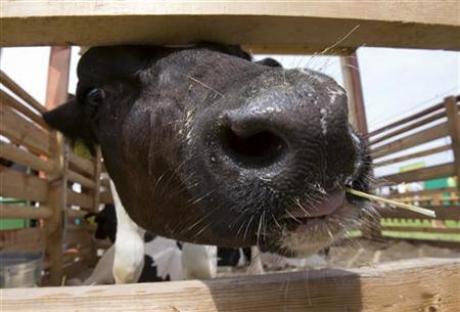
Chicago - The intense heat and humidity that blanketed central Kansas since late last week have killed more than 2,000 cattle and one state official called the heat-related losses the worst in his 17 years on the job.
However, conditions for the cattle improved somewhat on Tuesday as the humidity has decreased and the wind has picked up, state and feedlot sources said.
Kansas is the third largest cattle state with more than 2 million cattle in feedlots.
"It is all cattle in feedlots. It is more the humidity than the heat," Ken Powell, environmental scientist with the Kansas Department of Health and Environment, said of the more than 2,000 cattle deaths.
The cattle deaths have overwhelmed rendering plants and some feedlots are burying the carcasses in accordance with state regulations, said Powell.
"From the standpoint of dealing with the disposal of animals, this is the worst I have seen in the almost 17 years I've been here," he said.
The death losses helped guide Chicago cattle futures higher on Monday, but on Tuesday the futures were near unchanged as traders awaited Friday's release of a USDA cattle supply report.
While the loss of cattle is a financial hardship for producers, the slowdown in weight gains in the surviving cattle can often have a greater impact on cattle markets.
"It is more the (beef) tonnage that is taken off. They (cattle) underperform," said Don Roose, analyst at U.S. Commodities Inc.
Cattle, on average, gain about 4 lbs of beef per day under ideal conditions. But during harsh weather, such as the current heat wave, that rates of gain declines.
"It has been just grueling," Roose said of the heat. "That has been what's underpinning the cattle market."
At the CME, the August cattle futures contract closed Monday and Tuesday at 93.125 cents per lb, the highest level in two months.
Temperatures reached 101 Fahrenheit (38 Celsius) at Garden City in southwest Kansas on Monday, and highs in the region were expected to reach the upper 90s to low 100s F (upper 30s C) through Friday, said Joel Burgio, meteorologist at Telvent DTN.
"For three or four more days, it's still pretty stressful," Burgio said. "There is a chance you may see a few showers this weekend, which would help ease stress on the livestock.



that the heat was a contributing factor. But the real culprit is the fact that these cattle are packed into filthy, cramped conditions and the heat just exasperated these conditions.
The real killers are the big corporations that are owners of these feedlots.